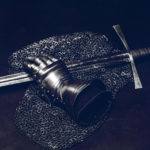Recently, I’ve noticed that, in specific and complex drills many students confuse the sight picture (what is seen and correlated to a defense) with a sudden change in the attacking angle – as the means to determine a defensive response.
To be clear, the attacking angle (e.g. the angle a knife attack has taken relative to the defenders centerline) is far and away the most important issue in determining the proper defense. The video below illustrates the problem and the solution. Check it out!





Scott
Good morning Chief, thanks for the video today. When your attacker has grabbed your right wrist (lead hand) are you doing a wrist release to break that grip so you can defend the knife with the right arm? I will be in class tonight but wanted to ask the question before I forget.
Thanks,
Scott
Danny Allende
Please explain in more detail, how I can effectively recover my arm/hand if the attacker has control of that arm/hand when my posture has been altered, meaning having been pulled forward from my traditional stance. Recording time: 3:17 – 3:30.
In a controlled setting, yes maybe it would work because the attacker knows that I would be wanting to defend with my opposite arm/hand and passively let it go. But in a real life situation, that arm/hand is being really controlled while the knife hand of the attacker is coming, and fast.
l recreated this same scenario with a partner and tried numerous times to properly release the controlled arm/hand and I was late each time. Each subsequent knife stab from the attacker was very devastating to vital parts of my torso. Mind you, we did this very slow but the applied pressure to the controlled arm/hand was there, and still I was late with very consequential knife attacks as a result.
Please advise…